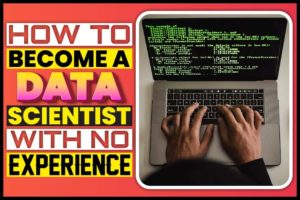
If the title of this article has sparked your interest, then you are probably entertaining the idea of a career as a data scientist. Regardless of your motives, in case you are wondering if this is a good idea – the short answer is yes. The Data Scientist occupation is constantly topping the charts of most-desired jobs worldwide. In 2017, LinkedIn named it the fastest-growing job, while in 2018 both GlassDoor and PriceWaterhouseCoopers have designated it as “the best job in the United States”. Available statistical data seems to confirm this: according to the U.S. Bureau of Labor Statistics, the job growth for data scientists has been a whopping 650% since 2012, with an estimated 11.5 million new jobs to be created by 2012. Pay checks are also quite impressive – the average annual salary of data scientists in the USA is over 120 thousand dollars.
Now that we have established the appeal of a career in data science, let us take a closer look at the occupation itself. A data scientist is someone who uses their analytical, statistical, and programming skills to gather, analyse and interpret large sets of data, in order to provide informational support to other departments in the company and to encourage data-driven decision making regarding each and every component of the business. While job responsibilities vary depending on the organization and role, generally a data scientist collects and sifts through large volumes of data, to reach impartial conclusions, make forecasts and issue recommendations for successful business outcomes, by collaborating with various stakeholders inside and outside of the company.
Even though it is true that you can start your data scientist career without having any experience, you have to understand that learning data science is never a finite process, but rather a lifelong commitment to excellence – first and foremost, a data scientist is someone who is constantly researching, learning and updating their knowledge base. As you get more experienced and knowledgeable, the volume of new information to study will slowly decrease over time, but you should never stop learning, because otherwise you risk getting out of shape and becoming expendable as a specialist. If you think that you are ready and willing to pursuit such a serious endeavour and commit for the long term, here are several important steps to get you on your way towards becoming a full-fledged data scientist:
1. The Fundamentals
Your first step in the world of data science should be all about the fundamentals. This means brushing up on your mathematical skills and your knowledge of statistics. You can try to do this on your own, by pulling out dusty manuals, doing online research and watching informative tutorials on YouTube. Alternatively, you can enrol in one (or several) of the many Data Science 101-type courses available online. Once you get the basics sorted out, you should further focus on Calculus and Descriptive Statistics, especially on Bivariate and Multivariate Analysis.
While this may sound a little boring, these fundamentals will do for you exactly what the word suggests – set a sturdy foundation for the development of your career. We cannot overstate the importance of mathematics and statistics for your future professional achievements and success.
2. R Or Python
Once you have the fundamentals (mostly) sorted out, you need to pick a programming language. Even though there are tens of viable options, the truth is that only two languages stand out and are worth your consideration: R or Python.
Developed by the R Foundation for Statistical Computing, R is a free software environment for statistical computing and graphics. While it is being widely used by statisticians and data miners, R is considered more academic and is generally less popular than Python.
Created by Dutch programmer Guido van Rossum, Python is by far the first choice of data statisticians from all over the world. It has long surpassed the likes of JavaScript, C#, PHP and C++ in popularity, claiming the highest percentage of web traffic to Stack Overflow questions. Python is almost universally acclaimed for being more versatile and easier to use. Besides, Python has by far the largest data analysis community, which will be extremely important and useful for you in the beginning – you will always find a platform to ask for help and guidance.
After you pick your programming language, search for the best online courses or tutorials out of the thousands available out there and start learning and practicing!
3. SQL
Structured Query Language, a.k.a. SQL or Sequel, is a domain-specific language created for structured data management and stream processing. It is used for communicating with large databases, since it allows you to access multiple records with a single command, without the need to specify the exact path to the record.
First, you must learn how to create tables, insert data, perform queries, delete, and update the data as needed. This is the basic part that you can easily get from many tutorials readily available online.
Afterwards, you will advance to the next level and get to know and understand nested queries, join operations, co-related questions, normalization and much more. There is a lot to learn and discover when it comes to the intricacies of SQL.
4. Machine Learning
After you master the basics of Python and SQL, you will reach a point where you will need to understand the basics of Machine Learning. In the broad sense, Machine Learning is data analysis combined with artificial intelligence, where the system itself learns from the data that it analyses. There are several categories and types of Machine Learning algorithms, and to be able to use them efficiently, you need to be aware of their specifics and differences between them. This will later help you tremendously since you will know which model and techniques to use in each particular situation. Again, there are many courses available online on the basics of Machine Learning, so you should have no trouble finding several that suit your interests best.
5. Practice, Practice, Practice
Regardless of your current knowledge and the stage that you are at in your study efforts, it is always a great idea to immediately start practicing everything that you learn with regards to data science. There is a lot of theory involved in this profession, and the sooner you start using it, the higher your chances to understand it and make use of it in your career. You can start your practicing with free exercises and tasks, then slowly move on to freelance work or even an internship. This will help you gain much-needed confidence and will make you feel that your career is beginning to take shape and materialize. Good luck and keep persevering!








